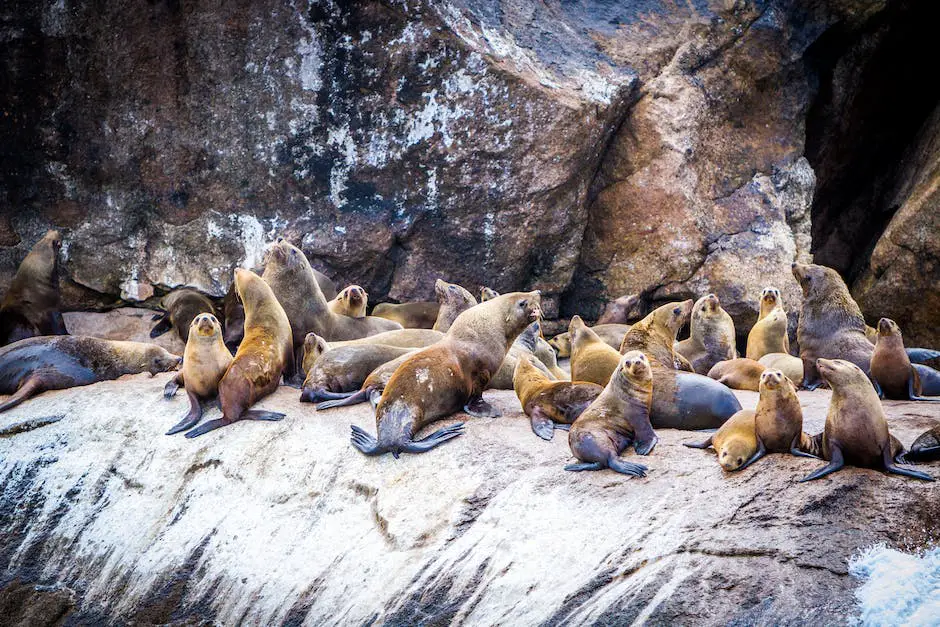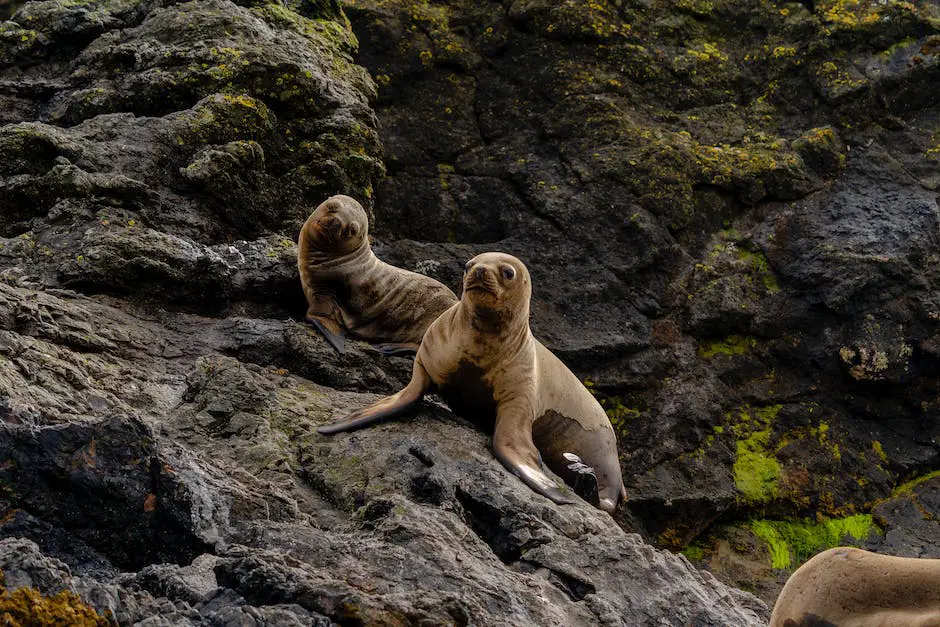Welcoming all marine life enthusiasts and hobbyists aiming to delve deeper into the captivating world of La Jolla seals and sea lions! Soaking up the charm of these endearing creatures in their natural habitat can be an enriching experience. However, it’s not just about turning up randomly; it is about understanding when you can see them the most, where to go, what to do, and how to respect their space. In this well-rounded guide, we will effectively arm you with pertinent information about the best times to visit, the must-know regulations, and tips on how to plan your adventure, ensuring an unforgettable, conscientious experience circling around these fascinating marine residents of La Jolla.
Knowing the Best Time to Visit
Researching the Ideal Time Frame for Visit
Begin your planning by conducting thorough research about the seals and sea lions’ behavior in La Jolla. Research about their breeding season and molting season. In general, seals and sea lions are often most visible between December and May. The peak breeding season for seals typically falls between late December and mid-February. Likewise, sea lions’ breeding season usually takes place from June to July. Research when they will be most present and visible on the beaches.
Understanding the Tide’s Impact on Visibility
Research about the local tide times in La Jolla. The seals and sea lions’ visibility on the beaches is often higher during low tide periods. Find resources online to track the tide schedules and plan your visit accordingly. Websites like Tideschart can help you determine when the tides will be low.
Observe their Daily Habits
Remember, seals and sea lions are not around all the time. They do have designated resting, feeding, and socializing hours. Thus, knowing their daily habits can increase your chances of seeing them. In general, these animals are most active during the day and love to rest on the rocky outcrops, beaches, and even on the man-made structures during the low tides.
Consider Visiting Early in the Morning
You may want to consider visiting early in the morning or later in the evening. These are the times when the animals are likely to be hauled out on the beach. However, if you can only visit during midday, don’t be disheartened. You might still spot some of them lounging on the rocks or swimming in the water.
Jotting Down Key Takeaways
Combine all the information to establish the best time and date for your visit. For instance, if you learn that the animals are most visible during the low tide, around dawn or dusk, during their breeding season, then you have a good chance to spot them if you visit in late December or early January, during the early morning or late evening hours, and during low tide. Mapping out these key takeaways will facilitate your visit and potentially increase your chances of seeing these adorable sea mammals.
In conclusion
Visiting La Jolla to see the seals and sea lions can be a rewarding experience, especially if you time your trip right. By understanding their habits, mate and molt timings, and how the tides affect their visibility, you can heighten your chances of successfully spotting them. Learning about the patterns of these majestic creatures before your visit will likely result in not only a productive but also an incredibly enjoyable trip.

Understanding Rules and Regulations
Understanding Rules and Regulations for Visiting the La Jolla Seals and Sea Lions
Visiting the La Jolla seals and sea lions is a wonderful way to appreciate the beauty of marine life. However, it's crucial to follow specific rules and regulations to maintain a safe and stress-free environment for these creatures. Here's how to understand the parameters with due responsibility:
Know Your Boundaries
One of the most important rules to follow when approaching seals or sea lions is to maintain a respectful distance. Ideally, you should stay at least 50 feet away from these animals. Avoid entering the water where seals or sea lions are seen, especially in areas marked by buoys or ropes to isolate resting animals.
No Touching, No Feeding
Touching or feeding the seals or sea lions is strictly prohibited. It's essential to understand that these are wild animals with natural behaviors and diets. Interference with their routine can cause undue stress and, in some cases, sickness.
Use a Quiet Voice
To avoid spooking the seals or sea lions, maintain a low, quiet voice when near them. Loud noises can frighten them and disrupt their rest periods, which are crucial for their health and wellbeing.
Stay Off the Rocks
Where the seals and sea lions rest, often on the rocks around the beaches, visitors ought to not climb on them. This ensures that the animals' habitat remains undisturbed.
Leashed-dogs Only
If you're planning on bringing a pet, only dogs on a leash are allowed in the vicinity. This regulation is strictly enforced as dogs can cause distress to the seals and sea lions.
Crowd Control is Crucial
Avoid visiting during the peak seasons to reduce crowding around the seal/sea lion areas. Overcrowding can lead to stress in these animals and disrupt their natural behaviors.
Follow Guidance
Lastly, pay attention to signs and guidance given by local authorities, volunteers, or park rangers. They offer valuable advice on how to behave responsibly around the seals and sea lions to ensure their wellbeing.

Planning Your Visit
Planning Your Itinerary: La Jolla Seals and Sea Lions
1. Research Best Spots: Start your plan by researching the best spots to visit where you can see seals and sea lions. The most famous spots are La Jolla Cove and Children’s Pool Beach (also known as Casa Beach). Both locations provide opportunities for viewing marine life in its natural habitat.
2. Park and Public Transport: If you’re driving, there is ample free and paid parking around La Jolla Village. Street parking is generally free but has a two-hour limit. There are also several paid parking lots and garages throughout the downtown area. If you choose public transportation, buses service the area regularly.
3. Exploring Nearby Attractions: There are several other tourist attractions you should consider when making your trip to La Jolla. The Birch Aquarium at Scripps, the Museum of Contemporary Art San Diego, and the La Jolla Underwater Park are landmarks worth visiting.
4. Plan Your Day: Aim to visit both La Jolla Cove and the Children’s Pool Beach in the morning or late afternoon when the seals and sea lions are most active. In between, you can explore the other attractions, shopping, and dining places in the village.
Emergency Planning
1. Wildlife Distress: In case you notice a seal or sea lion that appears to be in distress, do not attempt to intervene. Instead, maintain a safe distance from the animal and contact a trained marine mammal rescue organization like the SeaWorld Rescue Team or the Marine Mammal Center immediately.
2. Human-Seal/Sea Lion Interactions: If a seal or sea lion approaches you, do not touch, feed, or try to move it. This can stress the animals and provoke a reaction. Move away calmly and slowly, allowing the animal space to retreat.
Remember that wildlife like seals and sea lions are protected by federal law through the Marine Mammal Protection Act, which prohibits harassing, hunting, capturing, or killing any marine mammal.
Make sure to respect these incredible creatures during your visit and always prioritize your safety and the welfare of the wildlife you’re lucky enough to witness.

Crafting an all-inclusive exploration plan that respects the life and habits of La Jolla’s seals and sea lions not only emphasizes your role as a responsible visitor but also heightens the joy and fulfillment of your wildlife encounter. As you learn about their routines, observe their behavior, and adhere to regulations set to protect them, you become an integral part of the conservation efforts. So, get ready to plan your trip – an adventure filled with breathtaking sights, enriching wildlife knowledge, and first-hand experiences that will leave a permanent, appreciative imprint of these amazing creatures in La Jolla.

